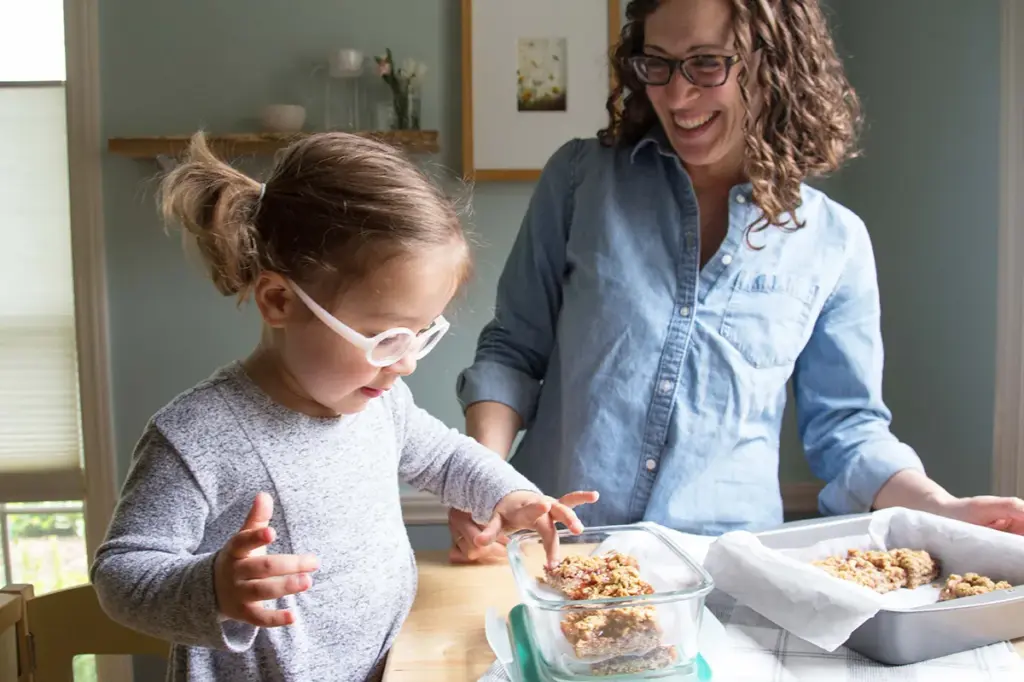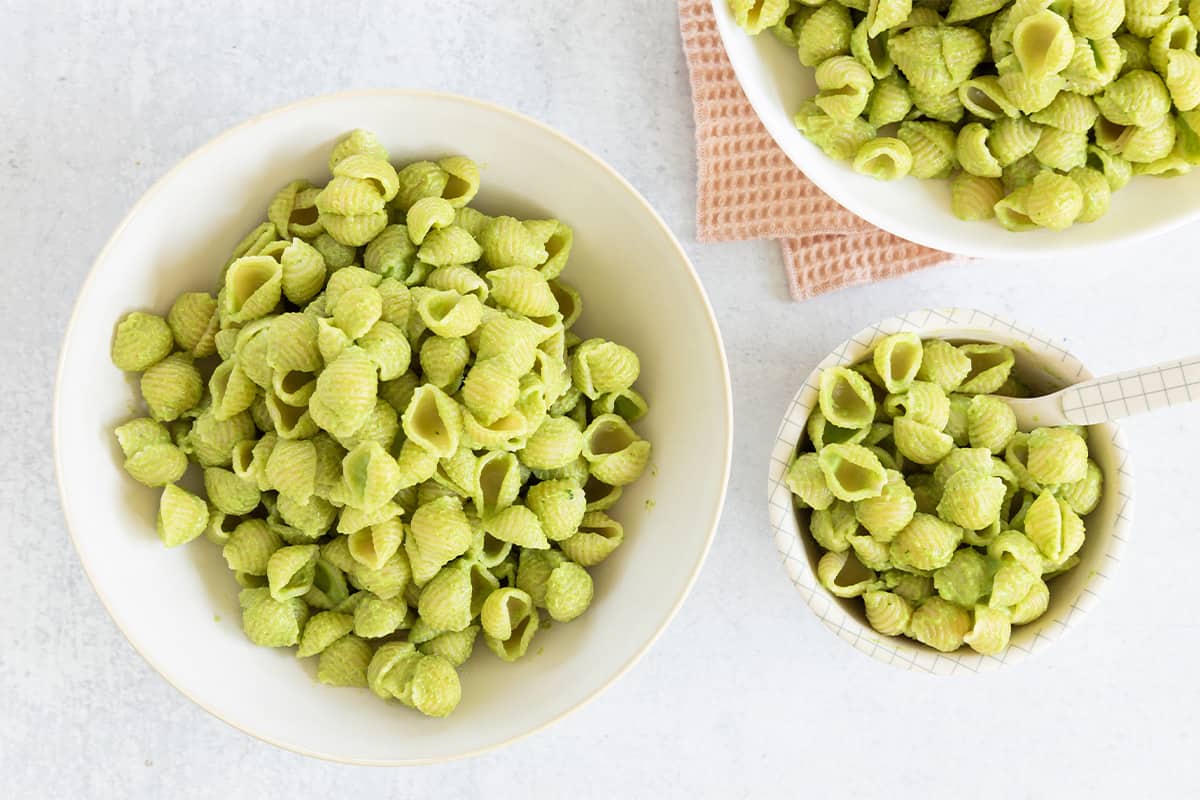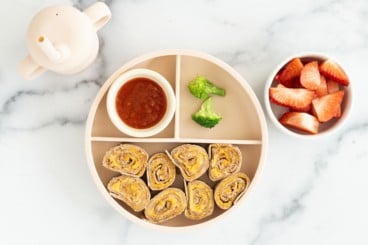Welcome to YTF Community, a place to safely share in the challenges and joys of feeding our families. If you’re looking for recipes, feel free to go right to the home page of yummytoddlerfood.com.
I want to start by saying that there is no one right approach to how we feed our families. I have changed my mind a lot of times about a lot of things. I may change my mind again, and I probably will. Which is just to start this on a note of we’re all on the same team here.

This this topic started for me with my first daughter. As a baby and a toddler, she was a voracious eater. She loved food and feeding her was a joy. For her first birthday, we had all of her favorite foods, which at the time included mini meatballs, red pepper pasta (which I am not sure I have made since!), roasted sweet potatoes, and Apple Cake. But somewhere in her one-year-old year, she started to not want everything I made for her, as toddlers often do. And since I was new at feeding a toddler, I didn’t know that was normal for that stage of development. So I did what I saw others doing—I started sneaking in vegetables.
Hiding vegetables in our kids food is one way to add nutrition to their food and have them eating foods they normally wouldn’t. So if you are worried about nutritional intake—even after knowing that varied intake is really normal for this age group—it might set your mind at ease a little. But I soon realized the giant complication of this practice: Whenever my daughter would realize that I’d added an ingredient to a dish that she didn’t expect, she would never eat that food again. In any form. (And often still won’t, all these years later.)
Which meant that we started to lose even more foods from her accepted foods list. And while it took me a few times of trying to sneak foods past her to fully grasp what was happening, I eventually realized I was breaking the trust she had in me at meals. And I really didn’t want to do that because as soon as I thought through how I would feel if someone I trusted did that to me—like if another adult made me a meal and then, once I was done, told me there was an ingredient in it that I usually don’t like—it left me really unsettled.
So I gradually decided that I cared more about preserving her trust in me at the table than I did her eating a few grated pieces of sweet potato tucked into a meatball.
And look, I know it’s hard to feed kids. Logistically, cooking for a family is a lot of mental and physical work, and everyone’s preferences are often always shifting. It can be easier to not disclose everything in the hopes that they’ll just eat what we make. Because kids can be fickle, and kids often don’t want vegetables. (Here’s a video I put together last week with easy tips to help with that!) But for me, it’s been working better to lean into full disclosure. And to let go of my fear that the kids won’t eat this or that before I even give them a chance.
Letting go of the fear that they won’t always eat all of the colors of the rainbow—or that some weeks it may look like they’re mostly eating the same foods—has taken me a lot of time. I still have some worries about it, if I’m honest. But the thing I have discovered in the past decade that has drastically improved my own relationship with food is that the way I feel about food matters a whole lot. It’s not just about nutrition. Anxiety, comfort, safety, satisfaction, and enjoyment ALL matter in our bigger picture relationship with food. (Which are related to the internal drives to eat, as Occupational Therapist and Feeding Specialist Jennifer Berry explained to me a few years ago.) And I witness everyday how much these things matter to my kids, too.

Which means I make bright green Spinach Muffins and Broccoli Pasta. I also make regular Chocolate Chip Mini Muffins and buttered pasta. We have green smoothies and also smoothies with just fruit and milk or yogurt. And I do my best to name recipes to reflect what they are and the foods in them—and I use those names at the table. Chicken Meatballs with Carrots are Chicken Meatballs with Carrots. Banana Brownies are called “Banana Brownies”. Cauliflower Mac and Cheese is “Cauliflower Mac and Cheese”. My Vegetable Broth is “Carrot Broth” because that’s what my middle kiddo named it.
I add produce to all sorts of recipes because it often adds flavor or improves the texture, or helps us use ingredients we may have on hand. I actively work to let go of my fear that someone will decide not to try a food if I tell them the truth. (In my reality, someone may decide not to try a food for 1700 other random reasons!) And I have found my kids like to know what’s what because they’re curious. (My youngest likes to help me make recipes in the blender and watch ingredients “disappear”. )
None of this is to say that they eat everything I make. They 100% do not. Sometimes the kids eat the food and like it, and sometimes they don’t. Which is, frankly, the same as it is with any other food!
There is so much pressure on us parents to “get our kids to eat” a giant range of foods right from the start of feeding them. And to then somehow maintain that list of foods they like forever, without any change. Which is just not how eating works in kids. (Or adults.) It’s normal for one year olds to assert more independence at the table and start to say no. It’s normal for a four year old to not be in the mood for what I decided is for dinner. It’s normal for me to have a hard time deciding what to eat for lunch when I have a lot of other things going on.
But there are all sorts of ways that we can maintain boundaries at the table so we’re not short-order cooking and also show our kids that it’s okay for them to have their unique preferences. And in a lot of ways, the culinary gymnastics required to fully trick a child into eating a food without knowing what it is are just making this harder than it all needs to be.
I would really love to hear from you because I think it helps to know we’re not alone in how we feel about a topic—even if we don’t all agree. So comment below, no judgment what-so-ever, promise!






















Even as an adult I don’t always want to eat certain foods, my tastes changes. It’s normal. I try to help explain the benefits of certain foods to my kids, that way my kids understand why it’s important to eat a variety of foods and what foods to limit.
I try to always be honest with my kid with what it on his plate. However, if it’s something blended up in a sauce, I’m not always providing every single ingredient. He also is usually around the kitchen when I’m cooking, and I’m not hiding anything.